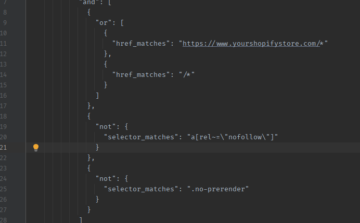In the dynamic world of user experience (UX) design, redesigning existing digital products is one of the biggest challenges. The key to success in this process is the skillful use of available data, and this is where desk research analysis comes into play.
Desk research, what is it exactly?
It is a research method involving the analysis of existing data and information, without the need for field research. In the context of UX redesign, desk research becomes an invaluable tool, allowing for a deeper understanding of user needs and the identification of areas that need improvement.
Types of data useful in Desk Research for redesign
In the user experience design process, desk research analysis can draw from various sources of information. Here are the key types of data to consider:
- Web Analytics
- User opinions and reviews
- Industry reports and UX trends
- Competitor data
- Internal reports and documentation
Web analytics, provided by tools such as Google Analytics, allows understanding how users navigate the site, where they spend most time, and where they encounter difficulties. User opinions and reviews, on the other hand, are a direct source of information about what users value in the product and what challenges they face.

Industry reports and UX trends allow placing the project in a broader market context and inspire innovative solutions. By tracking trends, we can anticipate user expectations and outpace the competition.
The process of using Desk Research in redesign
Desk research, what does it mean in the practice of redesign? It is a systematic process that involves several key stages:
- Identification of issues and areas for improvement
- Analysis of user behaviors
- Determining preferences and expectations of the audience
- Benchmarking and competitor analysis
The process starts with problem identification. Analyzing existing data helps to pinpoint key areas needing attention. This could be a high bounce rate on a specific page or low conversion in the purchasing process.
Next, a thorough analysis of user behaviors can reveal problematic paths, showing where users get lost or abandon further interaction. This information is invaluable in designing a more intuitive interface.
If you are interested in support with conducting Desk Research analysis, you will find a detailed description of our service here.
Practical applications of Desk Research in UX redesign
Desk research has a wide range of applications in the redesign process. Here are the main areas where it can be particularly helpful:
- Optimization of information architecture
- Improving navigation and user flow
- Tailoring content to user needs
- Enhancing the conversion process
Optimizing information architecture is one of the key areas. User behavior analysis may indicate the need for content reorganization. It may turn out that important information is too deeply hidden in the site’s structure, making it difficult for users to access it.
Improving navigation is another aspect where desk research is invaluable. User path data may suggest simplifying the menu or changing its structure. Perhaps users expect quicker access to certain features that are currently hard to reach.
You can find information about the broader context of using the Desk Research method in the UX field in the article Secondary Research in UX on the Norman Nielsen Group website.
Challenges and best practices
Although desk research is a powerful tool, it has its limitations. Here are the main challenges:
- Timeliness of data
- Context and interpretation of information
- Supplementing Desk Research with other research methods (e.g., benchmarking, testy użyteczności, wywiady pogłębione, audyt UX)
To effectively utilize desk research in user experience design, it is worth following the following best practices:
- Systematic collection and updating of data
- Combining different sources of information
- Verification of conclusions with users
The best practice is to treat desk research as a starting point, not a final solution. The results of the analysis should inspire further research and testing involving users.
Summary
Desk research analysis is the foundation of effective UX redesign. It allows for a deeper understanding of user needs, identification of problematic areas, and inspiration for innovative solutions. In user experience design, desk research is not so much an option as a necessity. Skillful use of existing data can significantly shorten the redesign process and lead to creating products that truly meet user needs.
If you need support in conducting desk research analysis for your project, contact us. Our team of UX experts will gladly assist you in optimizing the user experience of your digital product.






